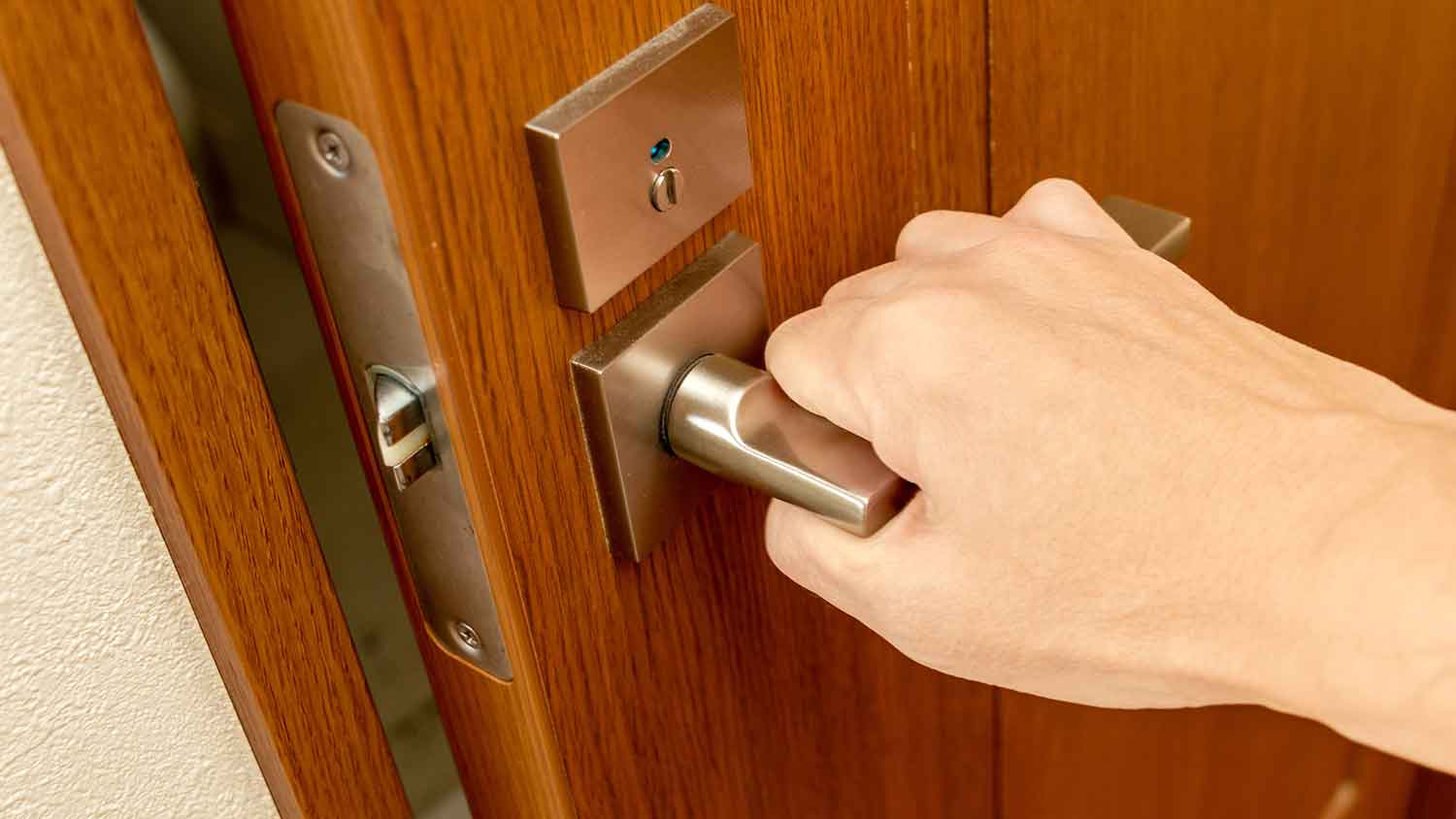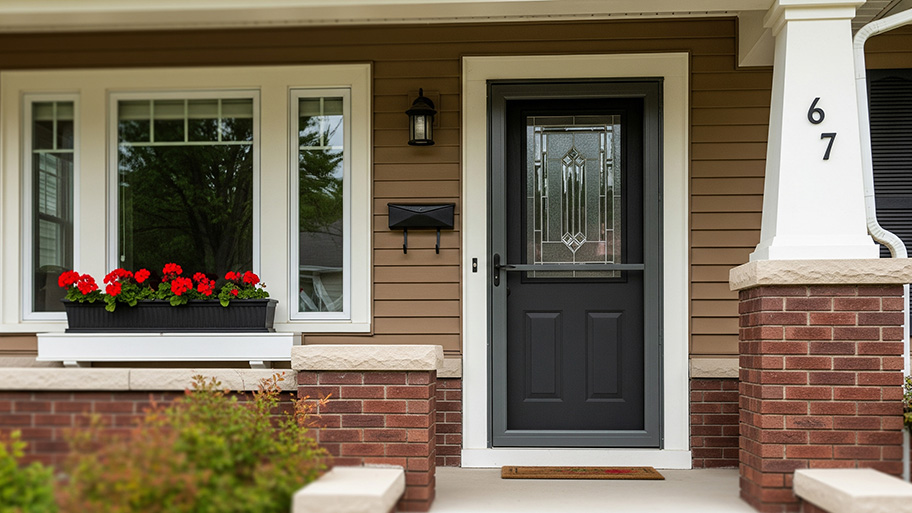
Discover the cost to weatherstrip a door, including average prices, key cost factors that impact your total price, and tips to save on your project.
How a small piece of metal keeps your door closed


Most doors have at least one retractable latch to secure them when closed.
Door latches consist of a faceplate, bolt, and latch assembly.
Spring latches use a spring to automatically move the bolt.
Deadlatches use a key to manually move the bolt.
Exterior doors have additional door latches for security.
Life is all about walking through open doors—but we rarely examine the mechanics of them. You may have noticed that most doors have a retractable latch hiding inside the door behind the knob or handle. This small metal fastener is the reason our doors work like they do. So, what are the retractable latches on a frame door for? This guide covers what you need to know.
The retractable latches on frame doors—commonly called door latches—help keep the door closed by engaging a bolt that enters a recess in the door frame. These latches retract to open the door and extend to close it securely. Without them, your door could open with a draft or slight nudge.
Most doors have at least one latch attached to the door knob or handle, though they may have additional latches in other areas for added security. These latches can work in conjunction with the door’s locking mechanism. A combination of latches is most common on exterior doors for peace of mind.

The exact way a door latch works depends on the type. For some, you’ll need to manually pull or swing the latch to open or close the door. Retractable latches, though, open or close with the turn of a door knob, handle, or key. Here’s how they work:
When you turn the door knob to open the door, it rotates a spindle attached to the latch assembly. The latch bolt (within the latch assembly) retracts, and your door opens.
Some latches have a spring inside the assembly. When you let go of the handle, the spring pushes the latch bolt so it protrudes from the door. When you close the door, the spring pushes the latch bolt into the recess in your door frame, called a strike plate.
The door latch is an essential part of your door, but let’s take a closer look. Most retractable door latches are made up of three different parts, which work with your locking system and door handle to help you open and close your door. If you need help getting your door working, a door repair specialist can make sure it closes and locks properly.
That little metal bar you see sticking out of the side of your door is called a latch bolt. The bolt retracts to open your door and extends to lock it.
The face plate is a piece of metal trim surrounding the latch bolt. This component helps protect the mechanics of your door latch and ensures the proper alignment of the latch bolt. It’s also a decorative element that finishes the look of your door. When the face plate sits flush with the door, you should be able to close your door without it sticking.
The latch assembly has three main components depending on the type. They work together to help you open your door when you turn the handle.
Cam drive unit: The cam drive unit is made up of two tiny cogs. The spindle from your door handle runs through the center of these cogs. When you turn the door knob, the cogs move the transmission plate.
Transmission plate: The transmission plate is attached to the latch bolt. When the cam drive unit pulls the transmission plate, the transmission plate pulls the latch bolt, opening your door.
Spring: In spring-loaded latch assemblies, there’s a spring around the latch bolt. This spring pushes the latch bolt back out of the door when you let go of the door handle or door knob.
Spring latches, dead bolts, and deadlatches are three of the most common types of retractable door latches. Here’s how they all slightly differ:
This is the most common type of latch. It has a spring-loaded bolt with a curved tip. When you turn the handle, the bolt automatically retracts. When you let go, it automatically extends.
Dead bolts are commonly used as a second latch to give exterior doors more security. This type of latch uses a flat bolt without a spring. The bolt extends and retracts manually when you turn a key.
A deadlatch is not to be confused with a dead bolt. This type of latch locks automatically when you close the door. In addition to the regular latch bolt, deadlatches have a guard bolt. This helps ensure someone can’t shimmy the latch bolt out of the strike plate and open the door when it’s locked.
If you’re stuck on choosing the right latch for your door, a local door repair service can help.
From average costs to expert advice, get all the answers you need to get your job done.

Discover the cost to weatherstrip a door, including average prices, key cost factors that impact your total price, and tips to save on your project.

A storm door can protect your front door and let in more fresh air. Find out how much storm door installation costs for materials, labor, and more.

French doors upgrade your space and fill it with natural light. Use this guide so that you can accurately budget the cost to install French doors.

Upgrading an interior door can add character and dimension to your home. Explore these unique interior door styles to see what fits your vibe and space the best.

Replacing the glass on a sliding door is a budget-friendly alternative to replacing the whole door itself. But is it a DIY project? Let's take a look.

If you are wondering who to hire to install weather stripping on your door, we share the best experts for fixing those pesky air gaps.